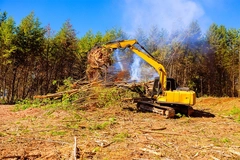
- Industry news
Industry news
- Category news
Category news
- Reports
- Key trends
- Multimedia
- Journal
- Events
- Suppliers
- Home
- Industry news
Industry news
- Category news
Category news
- Reports
- Key trends
- Multimedia
- Events
- Suppliers
Net zero dairy: Nestlé and Fonterra partnership poised to eliminate emissions in a decade

30 Nov 2022 --- Nestlé and Fonterra are partnering on a new project to reduce New Zealand’s dairy farm emissions and develop a commercially viable net zero carbon emissions farm. The project will run for five years with co-partner Dairy Trust Taranaki and assess all aspects of dairy farm operation regarding greenhouse gas (GHG) production.
The project aims to cut emissions by 30% by mid-2027 to reach net zero carbon emissions in ten years.
The project will share any insights or developments with other farmers during planned open days, who can then adopt the new methodologies for their farms.

 The project hopes to help both companies achieve their net zero promises. The road to net zero
The project hopes to help both companies achieve their net zero promises. The road to net zero
Nestlé and Fonterra say that the partnership strives to help both companies to reach carbon-neutral goals.
“Together with Fonterra, we hope to find practical, workable ways that dairy farmers in New Zealand can reduce net carbon emissions on their farms, with the goal of demonstrating these to farmers and seeing these practices mainstreamed,” Margaret Stuart, director of corporate affairs and sustainability for Nestlé Oceania, tells FoodIngredientsFirst.
“That said, it is critical to remember that every farm is different. This means we need to understand the broader farming system and look for specific levers that might work within it to continue to monitor and adapt for the conditions on that far.”
Stuart highlights the need for Nestlé to change its means of production.
Dairy and livestock farming account for around 33% of our total emissions, so in order for us to meet our climate goals, we must support farming to shift to how ingredients are produced.” she adds.
“New Zealand already provides some of the most sustainable nutrition in the world through its pasture-based dairy system,” says Miles Hurrell, CEO at Fonterra. “This new partnership will look at ways to further reduce emissions, increasing the country’s low-emissions advantage over the rest of the world.”
Hurrell underscores that the company aspires to be net zero by 2050.
“We know we will make bigger gains, for both the Co-op and country, by partnering with others. Working with partners like Nestlé is our best opportunity to create innovative solutions to local and global industry challenges.”
Hurrell is keen to establish that this partnership will also have a broader effect, allowing customers to reduce their carbon footprint.
“As well as our own goals, we must help our customers achieve theirs. Nestlé has ambitious plans, and we look forward to working together to discover systems that could help our farmer-owners continue building on their already good base,” Hurrell concludes.
Nestlé reiterated this broad view of the future while stressing the importance of working directly with dairy farmers.
“Dairy is our single biggest ingredient, and our vision is that the future for dairy can be net zero,” says Jennifer Chappel, CEO of Nestlé New Zealand.
“To reduce our Scope 3 emissions, we must work with dairy farmers and their communities. For this reason, we have over 100 pilot projects with partners worldwide, including in New Zealand, and 20 farms already striving toward the ambition of net zero emissions.”
Chappel explains that she hopes this top-down approach of achieving macro goals via micro assessment will only work by closely examining the minutiae of dairy farming.
“Working toward a net zero farm means looking at all aspects of the farm, from cow nutrition to sequestering carbon. We will share what we learn on the journey across the dairy industry to ultimately mainstream on-farm practices that will reduce the climate impact of the dairy industry.”
“This will contribute to Nestlé meeting our goal to achieve net zero emissions by 2050, including reducing our emissions by 20% by 2025 and 50% by 2030,” she concluded.
Stuart stresses that the New Zealand pilot scheme is hopefully the first of many such global projects.
New Zealand is a globally important producer of dairy ingredients, already associated with lower emissions due to its pasture-based farming systems, ideal climate and highly efficient producers.” she explains.
“That said, if we are to reach net zero, we need to continue to reduce the emissions associated with dairy, wherever we source.”
 Nestlé and Fonterra have partnered to create a new farm which will study greenhouse gas reduction methods. Room for growth
Nestlé and Fonterra have partnered to create a new farm which will study greenhouse gas reduction methods. Room for growth
As such, the partnership also involves launching a greenhouse gas support program for farmers. Farms enrolled in the project will get additional support from Fonterra to enable reductions in on-farm emissions.
Earlier this month dairy giants pushed back following accusations that methane emissions exceed that of entire nations.
The Institute for Agriculture and Trade Policy (IATP) holds 15 of the largest dairy companies in the world (including Fonterra) responsible for 3.4% of global methane emissions from human activity and 11% of total global livestock emissions.
The IATP is skeptical of net-zero targets being announced by large corporations.
“The methane emissions of the big meat and dairy companies rival those of nation-states, yet they hide their colossal climate footprint behind a veneer of greenwash and net-zero targets,” asserted Shefali Sharma, European director of the Institute for Agriculture and Trade Policy, at the time of the report.
By James Davies










